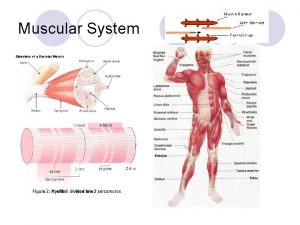VENOUS INSUFFICIENCY Chronic venous insufficiency occurs when your

















- Slides: 17

VENOUS INSUFFICIENCY • Chronic venous insufficiency occurs when your leg veins don’t allow blood to flow back up to your heart. Normally, the valves in your veins make sure that blood flows toward your heart. But when these valves don’t work well, blood can also flow backwards. This can cause blood to collect (pool) in your legs.


VENOUS ULCER • A venous skin ulcer is a sore on your leg that’s very slow to heal, usually because of weak blood circulation in the limb. • Venous ulcers happen when there’s a break in the skin on your leg, usually around the ankle.


VERICOSE VEIN • Varicose veins, also known as varicoses or varicosities, occur when your veins become enlarged, dilated, and overfilled with blood. Varicose veins typically appear swollen and raised, and have a bluish-purple or red color. They are often painful



CELLULITIS • Cellulitis is a common and sometimes painful bacterial skin infection. It may first appear as a red, swollen area that feels hot and tender to the touch. The redness and swelling can spread quickly. • It most often affects the skin of the lower legs, although the infection can occur anywhere on a person’s body or face. • Cellulitis usually happens on the surface of the skin, but it may also affect the tissues underneath. The infection can


LYMPHANGITIS • Lymphangitis is an inflammation of the lymphatic system, which is a major component of your immune system. • Infectious lymphangitis occurs when bacteria or viruses enter the lymphatic channels. They may enter through a cut or wound, or they may grow from an existing infection.


LYMPHADENITIS • Lymphadenitis is an infection of the lymph nodes (also called lymph glands). It is a complication of certain bacterial infections. • Lymphadenitis occurs when the glands become enlarged by swelling (inflammation), often in response to bacteria, viruses, or fungi. The swollen glands are usually found near the site of an infection, tumor, or inflammation.


ELEPHANTIASIS • Elephantiasis, also known as lymphatic filariasis, is a very rare condition that’s spread by mosquito. • Lymphatic filariasis impairs the lymphatic system and can lead to the abnormal enlargement of body parts, causing pain, severe disability and social stigma. • Infection occurs when filarial parasites are transmitted to humans through mosquitoes.


LYMPHEDEMA • Lymphedema refers to swelling that generally occurs in one of your arms or legs. Sometimes both arms or both legs swell. • Lymphedema is most commonly caused by the removal of or damage to your lymph nodes as a part of cancer treatment. It results from a blockage in your lymphatic system, which is part of your immune system. The blockage prevents lymph fluid from draining well, and the

 Percussion test for venous insufficiency
Percussion test for venous insufficiency Convergence insufficiency latham
Convergence insufficiency latham Parallel strap muscle
Parallel strap muscle Passive insufficiency
Passive insufficiency Convergence insufficiency athens
Convergence insufficiency athens Pseudo convergence insufficiency
Pseudo convergence insufficiency Divergence insufficiency
Divergence insufficiency Epi 4 dogs
Epi 4 dogs Give us your hungry your tired your poor
Give us your hungry your tired your poor Acute blood loss anemia
Acute blood loss anemia Definition of chronic toxicity
Definition of chronic toxicity Flinders model of chronic health disorders
Flinders model of chronic health disorders Chronic care model wagner
Chronic care model wagner Earthy look in chronic renal failure
Earthy look in chronic renal failure Chronic granulomatous disease
Chronic granulomatous disease Chronic care model definition
Chronic care model definition Kronfeld mountain pass theory
Kronfeld mountain pass theory Chronic blood loss
Chronic blood loss

































